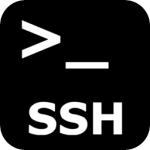 After (or before) installing CSF, APF or some other IPTABLES based firewall there is often a need to clear all existing rules before starting the firewall otherwise you wun the risk of locking yourself out of the server console.
After (or before) installing CSF, APF or some other IPTABLES based firewall there is often a need to clear all existing rules before starting the firewall otherwise you wun the risk of locking yourself out of the server console.
The following suggestion will clear all IPTABLE firewall rules.
#!/bin/sh echo "Stopping firewall and allowing everyone..." iptables -F iptables -X iptables -t nat -F iptables -t nat -X iptables -t mangle -F iptables -t mangle -X iptables -P INPUT ACCEPT iptables -P FORWARD ACCEPT iptables -P OUTPUT ACCEPT
You may find it helpful to have a script on your server ready to run.

 Troubleshooting Mailman Mailing List Manager
Troubleshooting Mailman Mailing List Manager